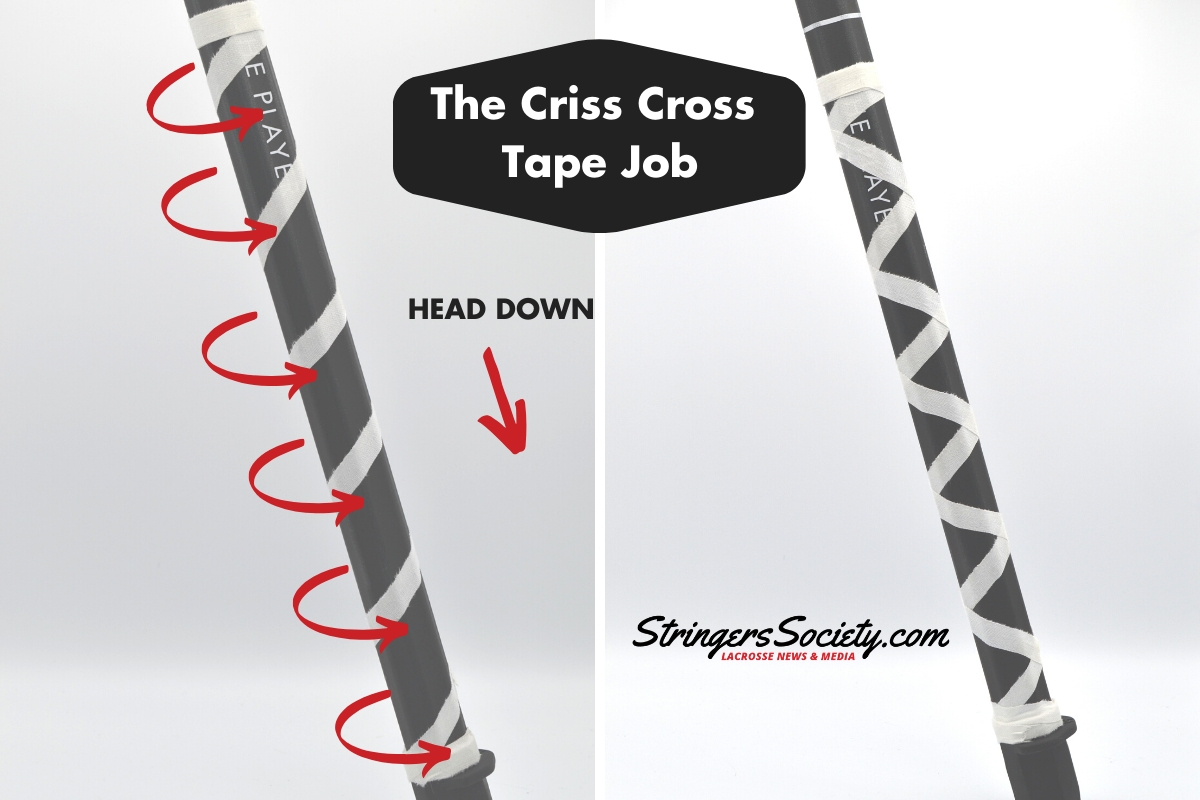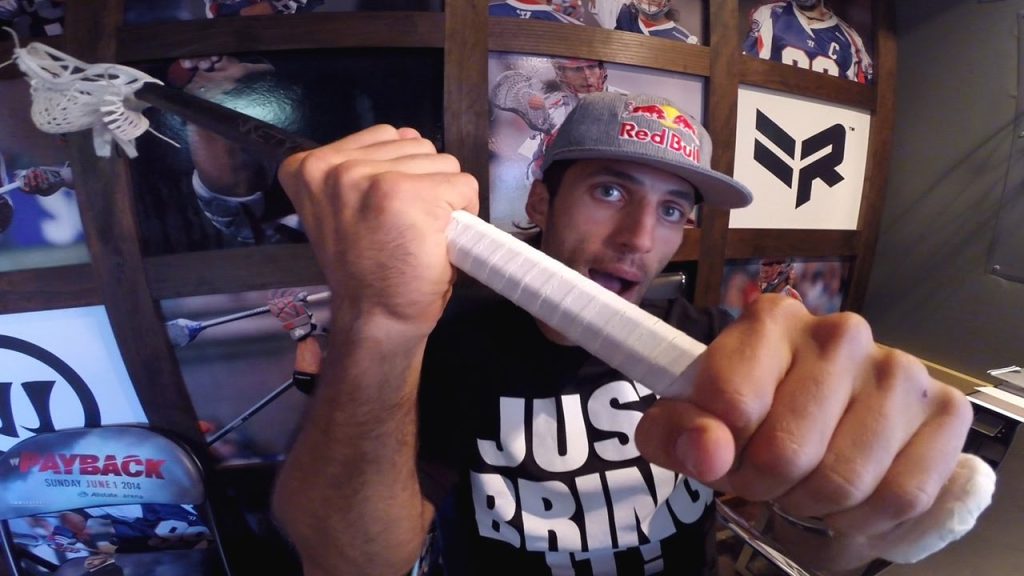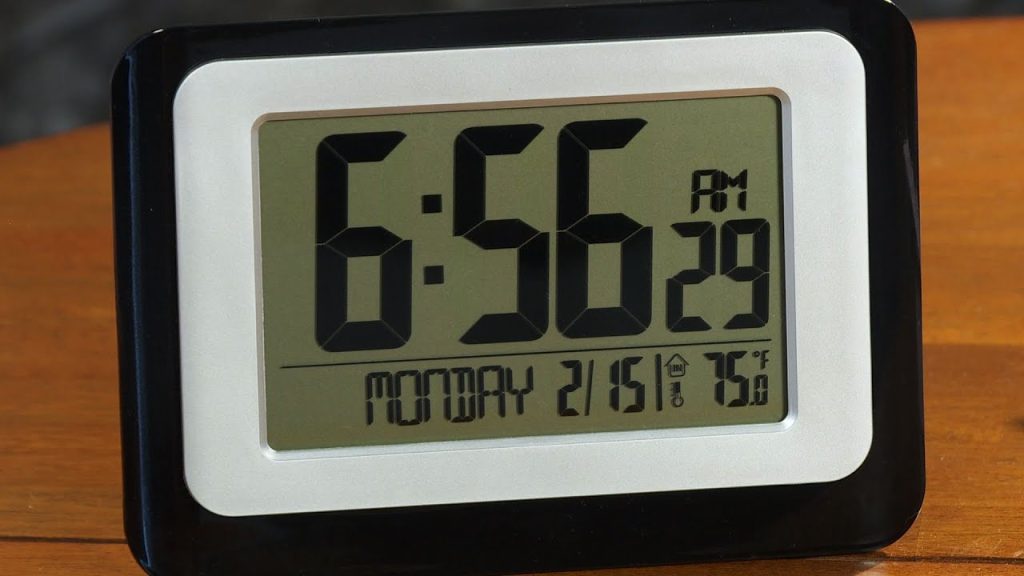Taping a lacrosse stick is crucial for grip and control. Let’s dive right in.
Learning how to tape a lacrosse stick can make a big difference in your game. Proper taping improves your grip, making it easier to handle the stick. It also offers better control during quick moves and passes. Whether you are new to lacrosse or a seasoned player, knowing the right way to tape your stick is essential.
This guide will walk you through the steps, so you can play with confidence and skill. Get ready to enhance your performance with a well-taped lacrosse stick.
Introduction To Taping Lacrosse Sticks
Taping a lacrosse stick can affect your game. It gives you better grip, control, and feel. Taping also helps protect the stick from wear and tear. Learn how to tape your lacrosse stick properly to boost your performance on the field.
Importance Of Proper Taping
Proper taping is crucial for many reasons. First, it enhances grip. A better grip means more control over the stick. This can improve your passes and shots. Second, it protects your stick. Taping can prevent cracks and splinters. Third, it allows for customization. You can tape your stick to match your unique style and needs.
Common Mistakes
Many players make mistakes while taping their sticks. One common mistake is using too much tape. This can make the stick too heavy. Another mistake is not taping the butt end. The butt end needs to be secure for a good grip. Using old or low-quality tape is also a mistake. It won’t stick well and may peel off quickly. Lastly, uneven taping can affect your game. Make sure the tape is smooth and even.

Credit: stringerssociety.com
Essential Tools And Materials
Taping a lacrosse stick is an essential skill for any player. To do it right, you need the correct tools and materials. Having these supplies on hand ensures a secure and comfortable grip. This section will guide you through the essential tools and materials needed for taping a lacrosse stick.
Tape Types
Several types of tape are available for lacrosse sticks. Choosing the right one can make a big difference.
- Cloth Tape: This is the most common type. It offers a good grip and is easy to apply.
- Rubber Tape: Provides a tacky feel. Good for added grip in wet conditions.
- Grip Tape: Often used for tennis rackets. It has a cushioned feel.
Additional Supplies
Besides tape, several other materials are useful for taping a lacrosse stick. These materials help ensure the tape stays in place and provides the best grip.
- Scissors: For cutting the tape to the desired length.
- Rubbing Alcohol: Cleans the stick surface for better tape adhesion.
- Pre-wrap: Adds an extra layer under the tape for comfort.
- Utility Knife: For precise cuts and trimming excess tape.
Having these essential tools and materials will make the taping process smooth. It ensures your lacrosse stick is ready for action.
Preparing The Lacrosse Stick
Before taping a lacrosse stick, it’s crucial to start with a clean and prepared surface. This ensures that the tape adheres properly and lasts longer. In this section, we’ll go over the essential steps for preparing your lacrosse stick.
Cleaning The Stick
First, clean the stick thoroughly. Use a damp cloth to wipe down the shaft and head. Remove any dirt, grime, or old tape residue. This will give you a smooth surface to work with.
For stubborn residue, you can use rubbing alcohol. Apply it with a cloth and scrub gently. Make sure the stick is completely dry before moving to the next step.
Choosing The Right Tape
Selecting the right tape is crucial for a firm grip. Most players prefer hockey tape due to its durability and texture. You can find it in various colors and widths. Choose a tape that matches your preferences and style.
Consider the following when selecting tape:
- Width: Wider tape covers more area quickly, while narrower tape offers more control.
- Texture: Some tapes are smoother, while others offer a more textured grip.
- Color: Choose a color that stands out or matches your team’s colors.
Once you have the right tape, you’re ready to start taping your lacrosse stick.

Credit: laxallstars.com
Taping The Handle
Taping the handle of your lacrosse stick is vital for a good grip and control. This guide will help you tape the handle effectively, making your game better and more comfortable.
Grip Tape Techniques
There are different ways to apply grip tape to your lacrosse stick handle. One common technique is the spiral wrap. Begin at the bottom of the handle and wrap the tape around in a spiral pattern. Overlap each layer slightly to ensure a firm grip.
Another technique is the criss-cross pattern. Start at the bottom and wrap the tape diagonally up the handle. Then, wrap it back down in the opposite direction, creating a criss-cross effect. This pattern provides extra grip and looks professional.
For a more customized grip, try adding grip rings. Wrap small sections of tape around the handle, spaced about an inch apart. This creates raised rings that can help with grip and control.
Creating A Smooth Finish
Once you have applied the grip tape, it’s important to create a smooth finish. First, press down on the tape to remove any air bubbles. This ensures the tape stays in place and feels comfortable in your hands.
Next, use a lighter or heat gun to gently warm the tape. This helps the adhesive bond better to the handle. Be careful not to overheat the tape, as this can cause it to melt or wrinkle.
Finally, trim any excess tape with scissors. Make sure the edges are neat and smooth. This prevents the tape from peeling up during play. With these steps, you’ll have a well-taped handle that enhances your game.
Taping The Head
Taping the head of a lacrosse stick is crucial for performance. It protects the head and improves ball control. This section will guide you through the steps.
Protecting The Head
A well-taped head can prevent damage during play. Start by wrapping tape around the edges of the head. Use a durable tape to resist wear and tear. Make sure the tape covers the entire perimeter. This adds a layer of protection.
Next, focus on the scoop. The scoop often hits the ground. Wrap the tape around the scoop several times. This will cushion impacts. It will also prolong the life of your stick. A protected head stays in better shape longer.
Enhancing Ball Control
Taping can also improve ball control. Apply tape to the sides of the head. This creates a better grip on the ball. The tape should be tight but not too thick. The right balance is key.
Consider adding tape to the throat of the head. This is where the head meets the shaft. A secure grip here helps with handling. You’ll notice better control during passes and shots. Practice with your taped stick. Feel the difference in your game.
Advanced Taping Techniques
In lacrosse, taping your stick can greatly impact your performance. While basic taping provides a decent grip, advanced techniques can significantly enhance your game. These methods cater to personal preferences, ensuring a custom fit and feel. Let’s dive into some advanced taping techniques.
Customizing Grip Patterns
Customizing grip patterns can provide better control and comfort. Start by wrapping tape around the handle in a spiral pattern. Ensure the tape overlaps slightly for a secure grip. Some players prefer a candy cane pattern, which involves wider gaps between the tape. This pattern offers a unique feel and reduces the stick’s weight.
For a more textured grip, twist the tape before applying it. This creates raised ridges that enhance grip. You can also use tape to create rings at regular intervals. These rings act as markers for hand placement. Experiment with different patterns to find what works best for you.
Layering For Durability
Layering tape ensures your grip lasts longer. Start with a base layer using standard athletic tape. This layer protects the stick and provides a solid foundation. Next, add a layer of grip tape for added texture. Grip tape is thicker and provides a tackier feel.
For extra durability, finish with a final layer of athletic tape. Ensure each layer is tightly wrapped and overlaps slightly. This prevents the tape from unraveling during play. Layering also adds cushioning, reducing the impact on your hands.
By using these advanced taping techniques, you can customize your lacrosse stick to your liking. Experiment with different patterns and layers. Find what enhances your game.
Maintenance And Upkeep
Regular maintenance and upkeep of your lacrosse stick are vital. It ensures peak performance and extends the stick’s life. Proper care of the tape on your stick is crucial. This guide will help you maintain it effectively.
Replacing Worn Tape
Worn tape can affect your grip and control. Check the tape regularly. If you see fraying or peeling, it’s time to replace it. Carefully remove the old tape. Clean the surface to ensure a smooth application. Apply new tape in a consistent manner. Make sure it’s tight but not too tight. This ensures a comfortable grip and better control.
Ensuring Longevity
Proper tape application can extend its life. Use high-quality tape for better durability. Avoid exposing your stick to extreme temperatures. Store it in a cool, dry place. Check your tape after each game or practice. Small adjustments can prevent bigger issues. Keep your stick clean and dry. Moisture can weaken the tape and affect performance.

Credit: www.youtube.com
Expert Tips And Tricks
Taping a lacrosse stick is a skill that can enhance your performance. The grip, control, and durability of your stick depend on how well you tape it. Let’s dive into some expert tips and tricks to get the best results.
Pro Player Insights
Professional players have their own techniques for taping their sticks. Here are some insights:
- Start with a Clean Stick: Always clean your stick before applying new tape. Dirt and residue can affect the tape’s adhesion.
- Use Pre-Wrap Tape: Pre-wrap tape can provide a better grip and protect your stick from residue.
- Tape the Butt End: Creating a knob at the butt end can improve your grip. Make a small ball with tape and wrap it tightly.
- Spiral Technique: Wrapping tape in a spiral pattern can offer better control. Start from the bottom and move towards the top.
- Overlap Tape Slightly: Overlapping the tape slightly ensures a secure grip. It also prevents the tape from peeling off easily.
Commonly Asked Questions
Here are some common questions players have about taping their lacrosse sticks:
| Question | Answer |
|---|---|
| How often should I re-tape my stick? | Re-tape your stick every few games or when it starts to wear out. |
| What type of tape should I use? | Use athletic or hockey tape. It provides good grip and durability. |
| Can I use colored tape? | Yes, but ensure it is of good quality. Colored tape can add style but must be durable. |
Remember, practice makes perfect. Experiment with different techniques to find what works best for you. Happy playing!
Frequently Asked Questions
What Materials Do I Need To Tape A Lacrosse Stick?
You need athletic tape, scissors, and a lacrosse stick. Optional items include grip-enhancing products and colored tape for customization.
How Often Should I Re-tape My Lacrosse Stick?
Re-tape your lacrosse stick every few weeks or when the tape shows wear. Frequent players might need to re-tape more often.
Why Is Taping A Lacrosse Stick Important?
Taping improves grip, control, and protection of your lacrosse stick. It also helps prevent slippage during gameplay.
Can I Use Any Tape For My Lacrosse Stick?
Use athletic or hockey tape for best results. These tapes are durable and provide better grip compared to regular tapes.
Conclusion
Taping a lacrosse stick can improve your grip and control. Follow the steps to ensure a secure and comfortable hold. Make sure to replace worn tape regularly. This will maintain performance. Experiment with different styles and find what suits you best.
Proper taping can make a big difference in your game. Practice makes perfect. Enjoy playing lacrosse with a well-taped stick!


